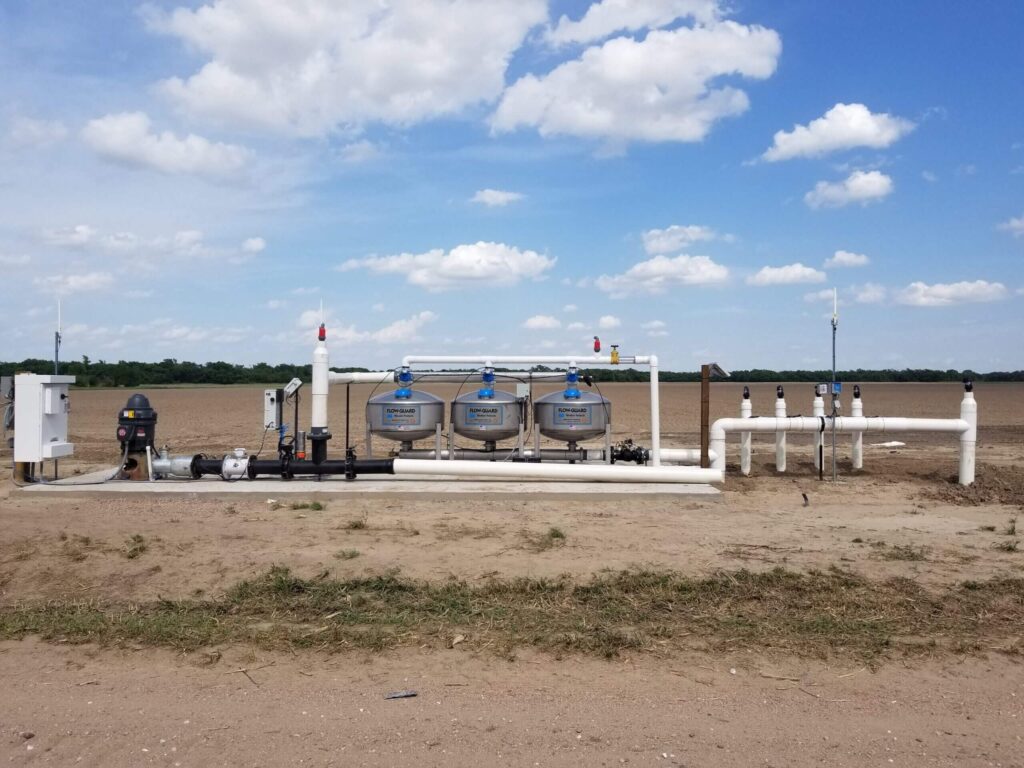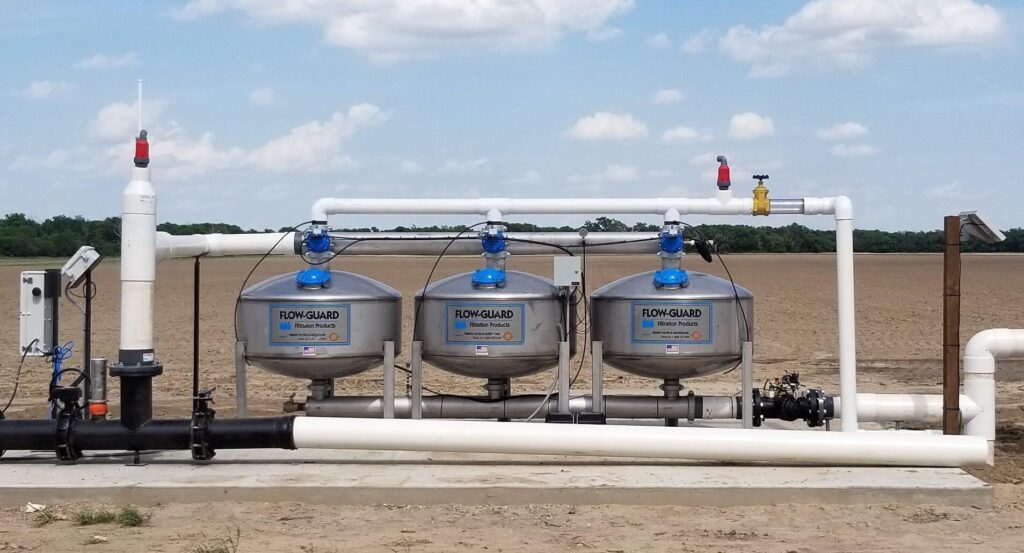From Seed to Harvest: The Role of Corn Irrigation System
Today we’re going to dive deep into the world of agriculture, focusing specifically on corn irrigation system. From the moment a corn seed is planted to the time it’s ready for harvest, irrigation plays a vital role. This process ensures that the crops get the right amount of water at the right time, which can significantly impact the quality and yield of the harvest. In this blog post, we’ll explore different irrigation methods, their benefits, and how they contribute to the lifecycle of corn crops. So stick around if you’re a farmer looking to maximize your corn production or simply someone interested in understanding the behind-the-scenes of corn cultivation.

The Lifecycle of Corn
The lifecycle of corn, a staple crop grown around the world, is complex and fascinating. This lifecycle can be broadly divided into two main phases: the vegetative phase and the reproductive phase.
Vegetative Growth Stage
The vegetative stage begins when the corn seed germinates and breaks through the soil surface. This initial growth stage is characterized by the development of the plant’s leaves and roots. Each new leaf that emerges is referred to as a collar, and these collars are used to stage the plant’s growth. For example, a corn plant with three visible leaf collars is in the V3 stage.
Generally, corn requires about 82 to 85 Growing Degree Days (GDD) to complete a leaf collar emergence up to the V10 stage. After this point, the plant continues to grow taller, develop more leaves, and begin to show tassels.
Reproductive Growth Stage
The reproductive phase begins when the tassel (the male flower) emerges at the top of the plant. The silk (the female part of the flower) also starts to appear on the ear at this stage. Each silk connects to a potential kernel on the ear, and it must be pollinated for the kernel to develop. This pollination process is crucial for the corn’s yield. After successful pollination, the kernels begin to fill with starch, undergoing several distinct stages from blister to dough to dent, before finally reaching physiological maturity.
Once the corn has reached maturity, it is ready to be harvested. Depending on the intended use of the corn (e.g., grain, silage), the optimal time for harvest may vary. Understanding the corn growth stages and their requirements can help farmers optimize their management practices, from planting to fertilization to pest control, ultimately enhancing yield and crop quality.
Different Methods of Irrigation
Irrigation is a critical practice in agriculture, ensuring that crops receive the water they need to grow and thrive. There are several methods of irrigation, each with its own advantages and disadvantages. Let’s look at some of the most common ones:
- Surface Irrigation: This is one of the oldest and simplest methods of irrigation. It involves flooding the field and letting the water flow over the ground to reach the plants. This method can be further divided into basin, border, furrow, and uncontrolled flooding. While it’s relatively inexpensive, it’s not very efficient as a lot of water is lost due to runoff and evaporation.
- Drip (Trickle) Irrigation: In this highly efficient method, water is delivered directly to the root zone of the plants through a network of tubes, pipes, valves, and emitters. It minimizes water loss, reduces weed growth, and allows for the precise application of fertilizers and pesticides. However, the initial setup cost can be high, and the system requires regular maintenance to prevent clogging.
- Sprinkler Irrigation: Similar to natural rainfall, water is sprayed over the crops using sprinklers in this method. The sprinkler irrigation can be permanently installed or movable, and the system can cover a large area. It’s more efficient than surface irrigation, but there can still be some water loss due to evaporation and wind.
- Center Pivot Irrigation: This method involves several segments of pipe joined together and mounted on wheeled towers with sprinklers positioned along its length. One end of the system is fixed, while the other moves in a circular pattern, irrigating a large area. It’s highly efficient and can be automated, but the initial setup cost is quite high.
- Subsurface Drip Irrigation (SDI): This is a variation of drip irrigation where the tubing or drip line is buried beneath the soil surface. It’s extremely efficient and reduces water loss due to evaporation, but it requires a significant initial investment and careful management to prevent clogging of the emitters.
- Manual Irrigation: This labor-intensive method involves watering plants using buckets or watering cans. It’s generally not practical for large-scale farming but can be used in small gardens or greenhouses.

Choosing the Right Irrigation System
Choosing the right irrigation system is a crucial decision that can significantly impact the productivity and profitability of your farming operation. Here are some factors to consider when selecting an irrigation system:
- Type of Crops: Different crops have different water requirements and tolerances. For instance, root crops may not do well with flood irrigation, while drip irrigation might be more suitable.
- Soil Type: Some soils absorb water quickly (sandy soils), while others absorb water more slowly (clay soils). Understanding your soil type can help you choose an irrigation system that will provide adequate moisture without causing waterlogging or runoff.
- Topography: The layout and slope of your land can affect the efficiency of certain irrigation systems. For example, surface irrigation is more suited to flat or gently sloping fields, while drip or sprinkler systems can be used on varied terrains.
- Water Availability: The amount and quality of available water can also influence your choice. If water is scarce, a more efficient system like drip irrigation might be best.
- Climate: Factors such as wind, humidity, and evaporation rates can affect the efficiency of irrigation systems. For example, in hot and windy climates, a significant amount of water from sprinkler systems can evaporate before it reaches the ground.
- Budget: The cost of irrigation systems can vary widely. Drip and center pivot systems, for instance, can be more expensive to install but offer higher efficiency and lower long-term operating costs.
- Labor Requirements: Some systems require more labor than others. Manual and furrow irrigation methods can require a lot of labor, while automated systems like drip or center pivot irrigation require less manual work.
- Energy Availability and Cost: Systems like sprinklers and drip irrigation require energy to operate. If energy is costly or not readily available, these systems may not be feasible.
- Infrastructure: Existing infrastructure, such as pumps, pipes, and power supply, should be considered. Some systems might require significant infrastructure upgrades.
- Crop Rotation: If you rotate crops, consider a versatile irrigation system that can be adjusted to meet different crop water requirements.
The Impact of Proper Irrigation on Corn Yield and Quality
Proper irrigation practices are crucial for enhancing corn yield and quality. Various studies have discussed the impact of different irrigation methods and water management practices on corn growth parameters, maize grain yield, and quality.
Drip and sprinkler irrigation systems, along with the appropriate amounts of irrigation water, can significantly influence corn yield, water use efficiency (WUE), and net profit. These systems can optimize water usage, reduce wastage, and improve the overall profitability of corn farming.
Irrigation regimes and nitrogen levels also play a vital role in maize yield and quality. Water stress can negatively impact yield and quality, while appropriate nitrogen levels can enhance these parameters.

Moreover, the quality of irrigation water is an essential factor in corn production. Poor quality water can lead to issues such as soil salinity and alkalinity, which can decrease yield and affect the performance of the irrigation system. Different irrigation frequencies under a drip irrigation system can also affect corn growth. It’s essential to find the right frequency that provides adequate water without over-saturating the soil.
Lastly, the use of effluent irrigation and irrigation scheduling can improve water use efficiency and corn yields, particularly in arid regions. However, the water quality should be monitored to ensure it doesn’t negatively impact the soil or crop.
